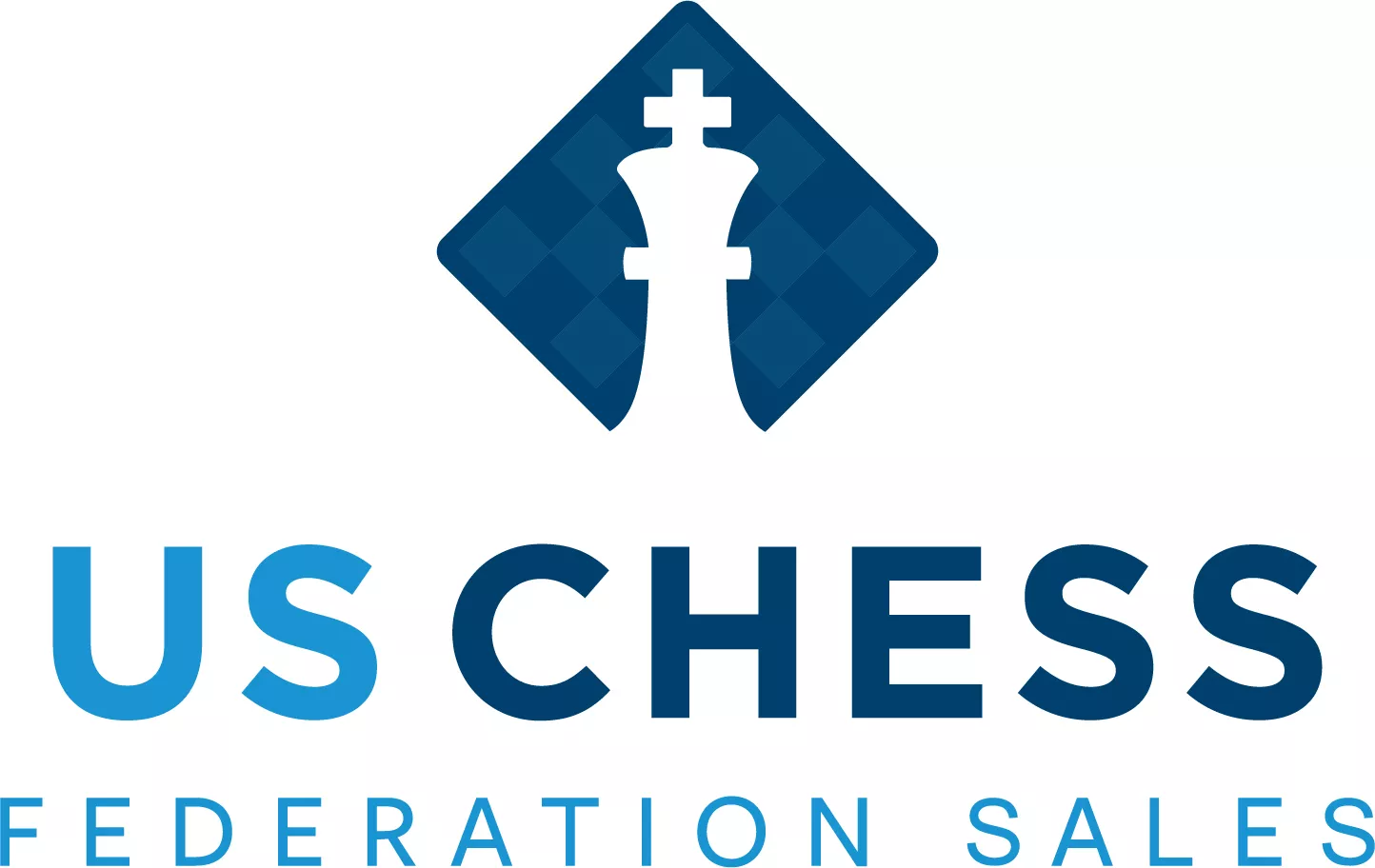Chess Opening Books: 10 of the Best
Selecting the ten best chess opening books is impossible since chess players have different playing styles. A positional player might rate an opening book on the Nimzowitsch-Larsen Attack as the best chess opening book, while an attacking player will prefer a book on gambits.
The other challenge in compiling a list of the best chess opening books is the different skill levels of chess players. The opening book that helps you when you are a beginner will differ from that which you find helpful as a strong club player.
These chess opening books are highly rated and cover many playing styles and skill levels.
General Chess Opening Books
These chess opening books cover a broad range of openings and often discuss opening principles. The first two books on the list are for beginners, and the second two are for intermediate players.
“Discovering Chess Openings” by John Emms
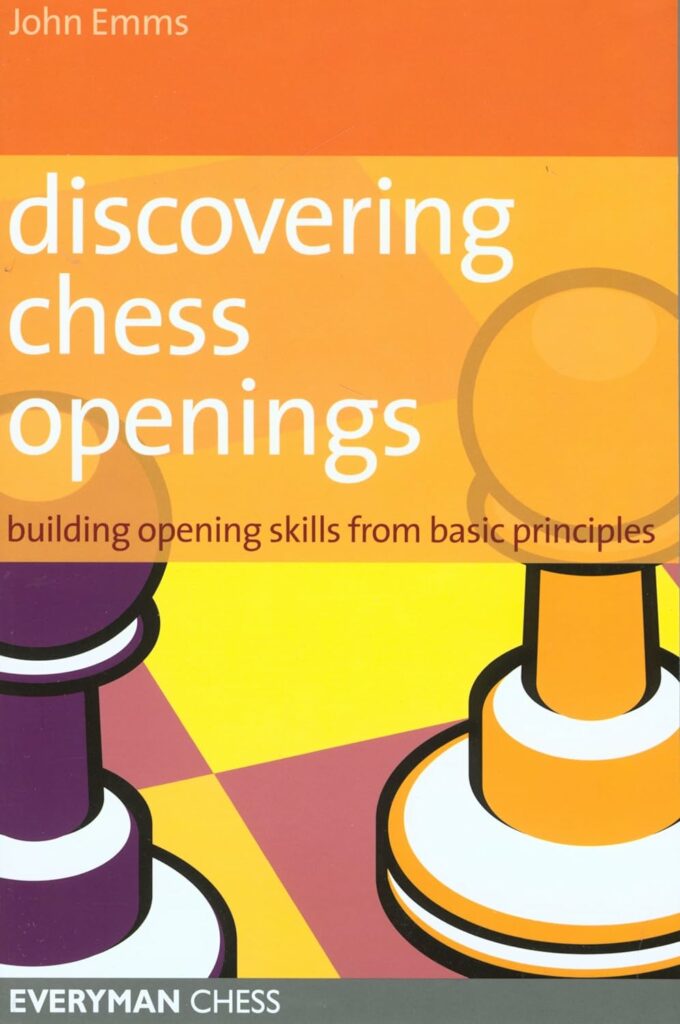
This book should be one of the first chess opening books a beginner reads. The largest portion of the book is all about learning opening principles.
These principles include the center, development, and king safety. After becoming familiar with what each principle means, the three principles are examined a little deeper in the fourth chapter. Chapter five discusses the role of pawns in the opening.
The last chapter shows how everything works together in the opening.
Stressing the importance of understanding the principles of chess ahead of theory is an excellent approach not only for beginners. Beginners often do not know the theory, so often, as a beginner, you will not get to play the variations you worked so hard to memorize.
Thanks to John Emms, you will know how to find the right move when you find yourself in an unfamiliar opening position. Prioritizing understanding will also serve you well in your middlegame and endgame studies.
“Chess Openings for Beginners – The Complete Guide to Strategies and Opening Tactics to Start Playing Like a Grandmaster” by Craig Medina
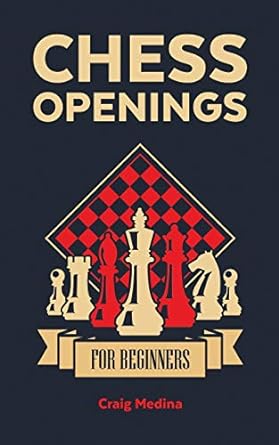
Although this book is designed for beginners, it could serve stronger players by giving them insights into the ideas behind an opening. If you are having trouble playing against a specific opening, you can learn what your opponent is trying to do.
For beginners, there are chapters on how the pieces move, opening principles, advice on two openings never to play, and all the major openings you could consider playing.
There are chapters on all four main opening moves – 1.e4, 1.d4, 1.c4, and 1.Nf3. You will also find tips within the openings and explanations about why a move is played.
“Back to Basics: Chess Openings” by Carsten Hansen

Aimed at post-beginners or club players, “Back to Basics” helps you take the next step in preparing your opening repertoire. The author begins by sharing the mistakes he made when learning the openings and offers suggestions on how you can take a better approach.
One of the many helpful chapters in this chess opening book is how to decide on an opening. Once you have learned the opening principles (yes, there is a chapter on them – chapter 2), it is time to choose an opening that fits your style of play.
Considering all the playable openings available, getting advice on how to choose one is extremely helpful.
There is coverage of all the different types of openings—for example, open games, semi-open games, closed games, etc.
Rounding it all off is a chapter on how to continue your studies and apply what you have learned.
This is an excellent book for players who do not want to go back to chess openings books for beginners but find themselves in need of how to change their repertoire. Even if you read three chapters, you would get your money’s worth.
“Modern Chess Openings 15th Edition” by Nick De Firmian
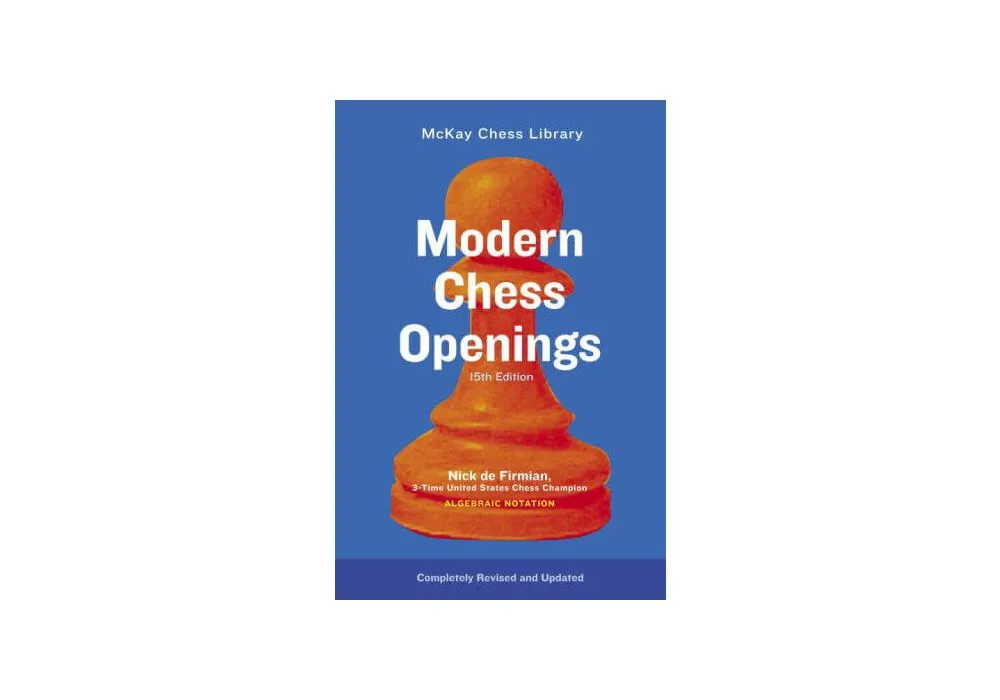
Also known as “The Chess Player’s Bible,” this chess openings book is a reference book on all the openings. An excellent reference book to have for when an opponent plays a sideline or variation you haven’t faced before.
Chess engines have made many openings playable that had a dubious reputation. There is simply no way to learn all possible sidelines ahead of time.
A good starting point is to learn three main variations in your new opening; MCO will help you identify the mainlines. As you play the opening, you will come across the sidelines and can use MCO to help you find the best response.
Because it’s a reference, this is not a chess opening book for beginners. MCO is ideal for chess players who wish to take their chess openings to the next level.
Repertoire Chess Opening Books
Although we can choose a single defense to 1.e4 or 1.d4 when playing with white, we need a more comprehensive approach. Black has several excellent defenses to 1.d4 or 1.e4.
This is why repertoire opening books are essential in helping you be well-prepared at the start of the game.
“Keep It Simple 1.e4” by Christof Sielecki
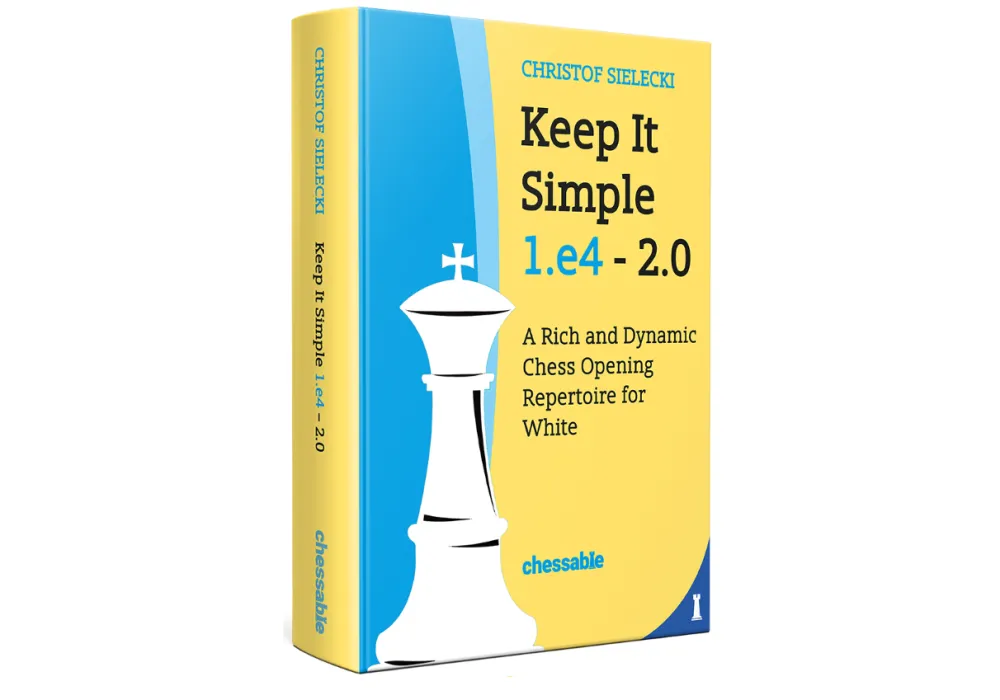
Fortunately, this book was written after the launch of the Chessable course. That means you benefit from the material added to the course in response to the user’s questions.
The book adheres to three KIS principles:
“The chosen lines are simple to learn.
It must be possible to find your way if you forget your lines.
Choose lines that may not be most critical but uncomfortable for the opponent.”
Christof Sielecki does an excellent job of keeping to these principles. The suggested variations are sound and easy to play.
Seeking to obtain too great an advantage out of the opening nowadays is unrealistic. Reaching a middlegame that is easier to play with white and has fewer weaknesses than your opponent is a solid, sensible approach.
Some of the variations Christof recommends are the Scotch Four Knights against 1…e5; the Exchange Variation against the French Defense; the Rossolimo (3.Bb5) against the Sicilian Defense; and the Two Knights against the Caro-Kann.
“A Strategic Chess Opening Repertoire for White” by John Watson

This repertoire is for those who prefer to start the game with 1.d4 and 2.c4. The variations do not avoid tactics or confrontations but tend to favor a more strategic and positional approach.
The advantage of going with a strategic repertoire is you are unlikely to find yourself in a bad position if you make one wrong move. The only real danger is the assessment of the position might drop a little.
Another advantage of a strategic repertoire over a tactical repertoire is that the theoretical workload is lighter. There is much less “must-know” material to keep you from getting a bad position.
The book contains a nice balance between mainlines and sidelines that still pose challenges for Black while being safe. If you have a variation that works well for you now, you can incorporate it into this repertoire and have a second weapon against a particular defense.
“Chess Openings for Black Explained” by GM Lev Alburt, GM Roman Dzindzichashvili, and GM Eugene Perelshteyn

The book begins by introducing you to the three authors, explaining how to use the book and how to study openings. After that, you get to learn a complete repertoire against all of White’s main moves and a few offbeat ones, including 1.b4.
Several valuable features help you remember the theory, like using blue to highlight critical positions, memory markers, and using larger diagrams for mainline variations.
Against 1.e4, the recommended defense is the Sicilian Defense Accelerated Dragon variation. The Anti-Sicilians are also covered.
The Nimzo-Indian and Bogo-Indian Defense are the suggested defense to 1.d4. The Torre, London, Veresov, and other 1.d4 systems are also included.
Helping to reduce the amount of theory to learn the recommended line against the English Opening involves 1…c5 and a kingside fianchetto. Playing a similar system against 1.e4 and 1.c4 is an excellent time-saver.
Model games are included after the theory section of each opening so you can learn how to play the middlegame that arises from the opening.
“Playing 1.d4 d5” by Nikolaos Ntirlis
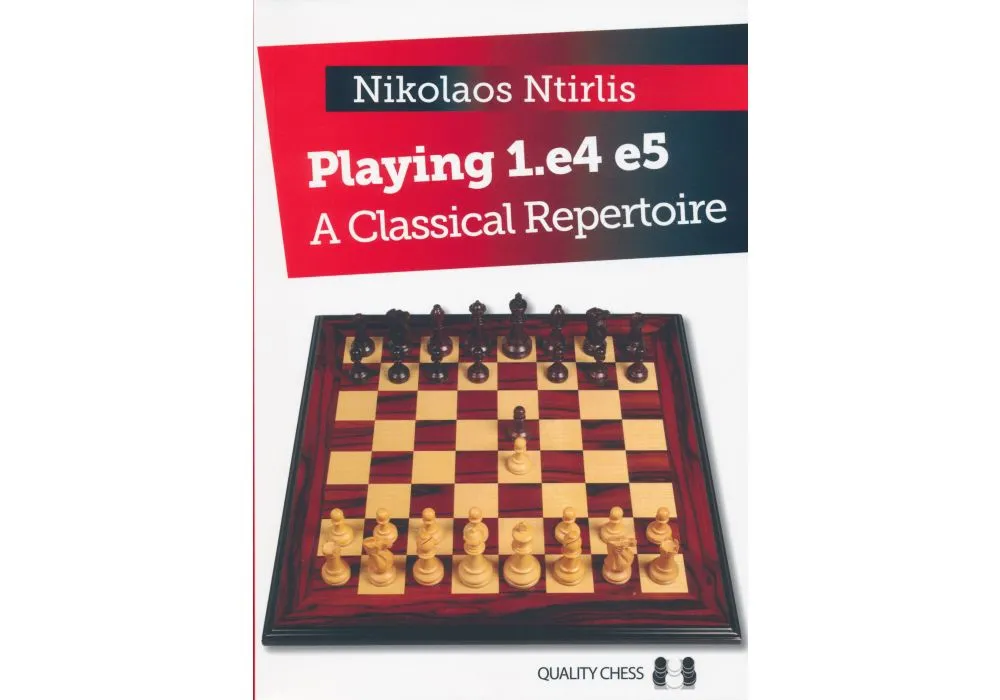
There is nothing better to improve your chess skills than playing one of the classical chess openings. In this excellent repertoire book, Nikolaos has chosen the Queen’s Gambit Declined against not only 1.d4 but 1.Nf3 and 1.c4 as well.
Before you begin learning the theory of each variation, you get introduced to the ideas and how to defend them properly. A lot of emphasis is placed on understanding why you are playing certain moves.
The typical pawn structures you are likely to encounter are also explained in some detail. You will learn not only how to make the most of them but also what White is trying to achieve.
Playing the Queen’s Gambit Declined set-up against various openings will soon deepen your understanding of the typical middlegame positions and give you the edge against your opponents.
Nikolaos offers another excellent chess opening book, “Playing 1.e4 e5,” with a positional repertoire that does not require much memorization and makes an ideal companion to “Playing 1.d4 d5.”
Chess Opening Books Based on Specific Openings
There are countless good chess opening books devoted to a particular opening. Here are two excellent books covering openings that are relatively light on theory and significantly reduce the chance of you making a costly error in the opening.
Included is a system-based opening you can play with white and a rock-solid defense you can play against 1.e4.
“The Agile London System” by Alfonso Romero and Oscar De Prado
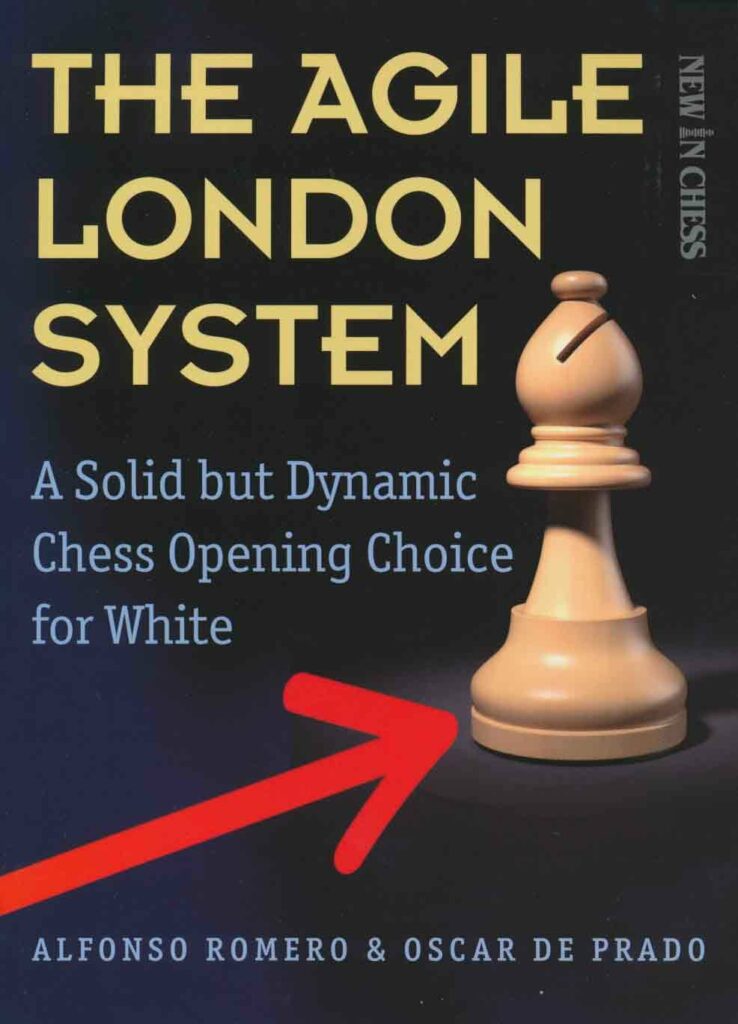
The current world chess champion, Magnus Carlsen, has successfully played the London system. This solid chess opening is a universal opening you can play against almost every defense to 1.d4.
This chess opening book provides you comprehensive coverage of all Black’s main defenses against the London System. If you are a busy player with little time to study chess openings, then the London System is the ideal opening for you.
Even if you have the time to study chess openings, you might prefer to work on other areas of your game and keep learning chess openings to the minimum. The London System does not require a lot of time to learn.
As a bonus, you will know you are unlikely to be caught by surprise in the London System. This is undoubtedly a low-risk opening to play with white.
“Playing the Petroff” by Swapnil Dhopade

The Petroff Defense has a reputation for being a drawish opening, yet there are lines where black can gain the initiative or more. Swapnil does not shy away from embracing these complicated lines.
At the very least, after working through this chess opening book, you will consistently reach a comfortable position against 1.e4. Once you are on level footing, you can begin to outplay your opponent, and there is no better defense to help you reach equality than the Petroff Defense.
There are some lines in the Petroff defense where sacrifices occur. White can sacrifice a knight for two pawns as early as move 4 – the Cochrane Gambit.
Swapnil does an excellent job guiding you through the theory with clear explanations.
The rock-solid nature of the Petroff Defense has caused many players with white to look for ways to avoid facing this defense. This comprehensive Petroff Defense chess opening book covers all the most common Anti-Petroff lines.
Final Thoughts
We are fortunate to live in a time when access to chess knowledge is so abundant. Often the challenge is not finding a good chess opening book but choosing from the many available.
There are many excellent websites where you can learn enough to test an opening in blitz or rapid chess games. After testing the opening and getting a feel for how well it suits you, there is no doubt you will easily find a quality chess opening book to help you study the opening.
